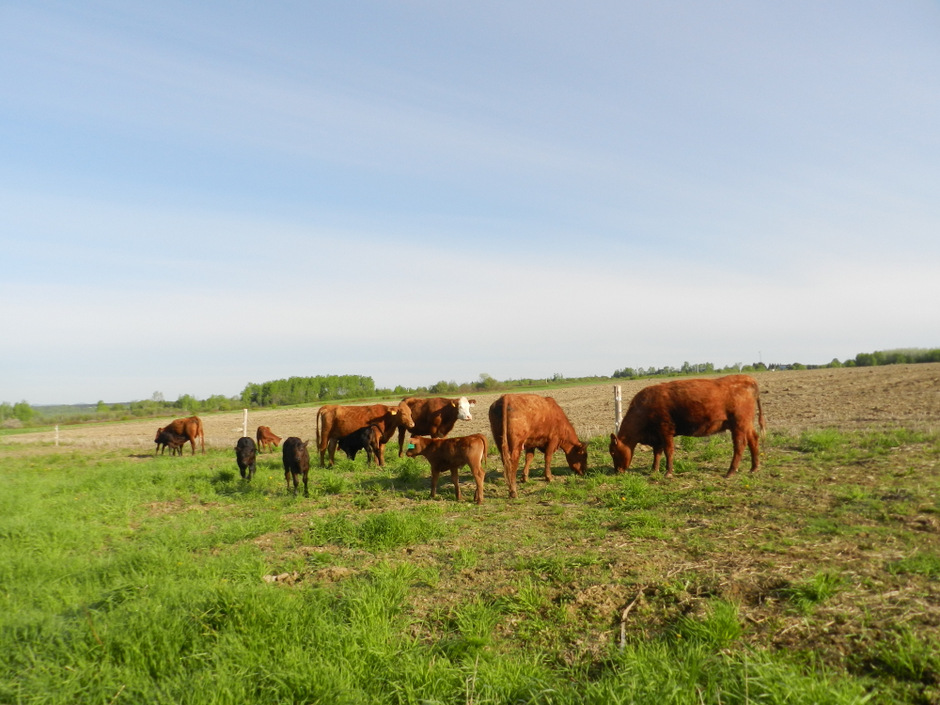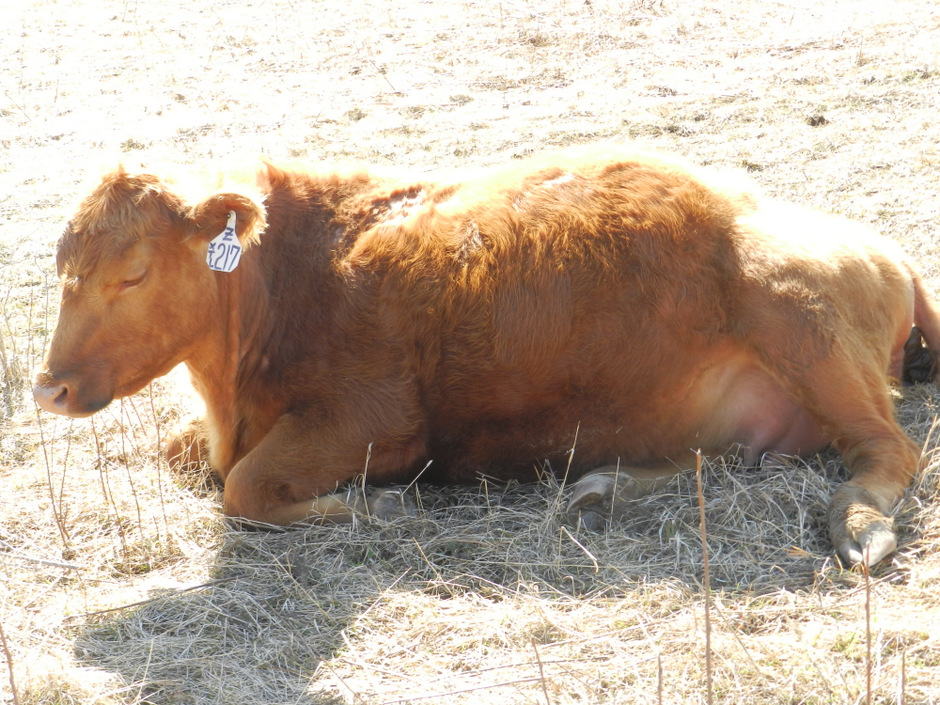
Here on the farm, calving season is always an exciting time of year.
Although we’ve been doing this for about a decade now, thinking our first calving season, we didn’t know what exactly to expect. Of course, we certainly had a “vision” for our first calving season. We were realistic with knowing that it would not be all rainbows and unicorns but we certainly were not expecting quite as dramatic of an introduction as we got (that’s another story!)

Nine calves and a month and a half later that first year we – and the cattle – found a rhythm of sorts. By absolutely no means would I call us experts in calving (in fact, I can promise that we will never refer to ourselves as “experts”) but we are definitely a bit more knowledgable, a bit more flexible and patient and a whole lot wiser to the realities, difficulties, and fortunately, some of the joys that come with calving.
In today’s post, I want to narrow the focus to the signs and symptoms we observed prior to the start of labor – some starting months out. This should help you get an idea of what to look for to tell when your pregnant cow or heifer is getting close to having her calf.
Udder, Teats and Vulva
A pregnant cow or heifer will start the bagging up process weeks, or even a month in some cases, before she actually gives birth and is fully bagged up. The bagging up process consists of the udder enlarging in preparation for milk production. The speed at which the udder enlarges seems to vary with each cow.

There were times when we thought the udder could not possible get any larger and we expected that heifer to start pushing any second!
How wrong we were! Overnight, their udders would almost double in size and then within a day or so, a calf would be born.

This heifer had her calf thee days after this picture was taken.
We learned to start watching for not only the size of the udder but the condition of the teats as well.
When the teats start to fill out and are smooth, loosing their wrinkly shape, we are on heightened alert!

This heifer had her calf three days after this picture was taken.
In addition to the the udder and teats, another part of the cow’s anatomy that can be an indicator to an impending birth is the vulva.
In particular, we look for a cow to “spring” or for her vulva to enlarge and loosen.
Similar to the udder bagging up, this process can start weeks before actual labor starts, with the vulva becoming increasingly loose and swollen leading up to the onset of labor.
The Bent Tail

Notice how this heifer’s tail is curved and lifted straight up. She is in the beginning stages of labor.
In our experience, a very reliable indicator that labor was starting or had started was a bent tail on the mother cow or heifer. The tail could be bent to the side or curved and lifted straight up. Either way a bent tail was, for the most part, a surefire sign that a baby calf was going to be born in the next couple of hours.
We did have one experience with a bent tail where we were certain the heifer was about to go into labor that night. She fooled us and waited until early the next morning.
Other than that “false alarm”, every other time that myself or Jer came into a pasture and saw a pregnant heifer with her tail bent to the side or straight up in the air, she had a calf shorty thereafter.
Discharge

One very common pregnancy symptom is vaginal discharge. As long as the discharge is relatively clear and free of blood, it is entirely normal and nothing to be concerned about.

At the time of the picture she was our lone pregnant heifer.
Discharge is not necessarily an indicator of labor starting soon, but we do notice an increase in discharge leading up to the start of labor.
Moaning, Labored Breathing and Laying Down

She delivered a heifer calf three days after this picture was taken.
For the most part, all pregnant beings – whether animal or human – moan, have labored breathing and as their due date approaches, spend more and more time resting in the horizontal position.

She was still a week out from delivering her heifer calf.
I consider these actions all normal signs of a normal pregnancy and not necessarily an indicator of labor starting soon. BUT, if you couple moaning or labored breathing with a bent tail, you just may find yourself having a calf very soon.
Loose Stool
In the weeks leading up to the start of labor, we tended to see an increase in loose stool. A heifer due to start labor soon would have an abundance of diarrhea. I think it is the body’s way of flushing everything out and preparing for the start of labor. In addition, I am sure it also has something to do with the influx of different hormones during pregnancy and prior to labor starting.
Behavior

For the most part, our heifers remained social and were easy to approach during their pregnancies. We do have one heifer that has always been a loner and a bit anti-social. So, whenever we saw her by herself, away from the herd, we were not alarmed.
For rest of our herd, though, such behavior definitely raised red flags for us.
Another indicator of labor starting soon can be a bad attitude. Very moody. Again, for the exception of one heifer, our herd is very easy-going. If a heifer was acting aggressive or giving off a “leave me alone” vibe, we made sure to respect her personal space while still keeping a close eye on her. If she was being moody and had a bent tail, we knew that more than likely labor was or would soon be starting. If she was acting agitated and had isolated herself from the herd, she was likely in the beginning stages of labor.

I was able to witness the births of five of our nine calves during our first year of calving, and many others since then. I can attest to the change in behavior as these heifers started the laboring process – change in behavior for both the laboring heifer and the rest of the herd.
I watched as one heifer tried to isolate and steal a calf from his mother and then proceed to pick a fight (imagine two rams fighting full-force) with the herd leader all the while being in labor with her calf’s hooves sticking out!! Talk about being in a bad mood! I was racing to separate the two fighting, PREGNANT heifers (again, one was in active LABOR) or I would have gotten pictures. The picture above is of the heifer that started the fight and her newborn heifer calf.
Yet another time, I watched as a pregnant heifer tried to steal not one, not two, but three different calves directly after their births. Pregnancy hormones can make you do crazy things. We nicknamed this heifer the “crazy Lifetime movie kidnapper.”
We have learned a lot about about the ins and outs of pregnant cattle, calving and newborn calves since getting started in this business.

We strongly feel that in order to have a successful cattle operation, with a sound breeding program and healthy cattle, we need to be in-tune with our herd. Integrating ourselves within the herd, observing their behavior and actions, and keeping good records is critical for the longevity of our operation. No matter how much you know, there is always more to learn and more to enjoy. Here’s to the next calving season!
Leave a Reply